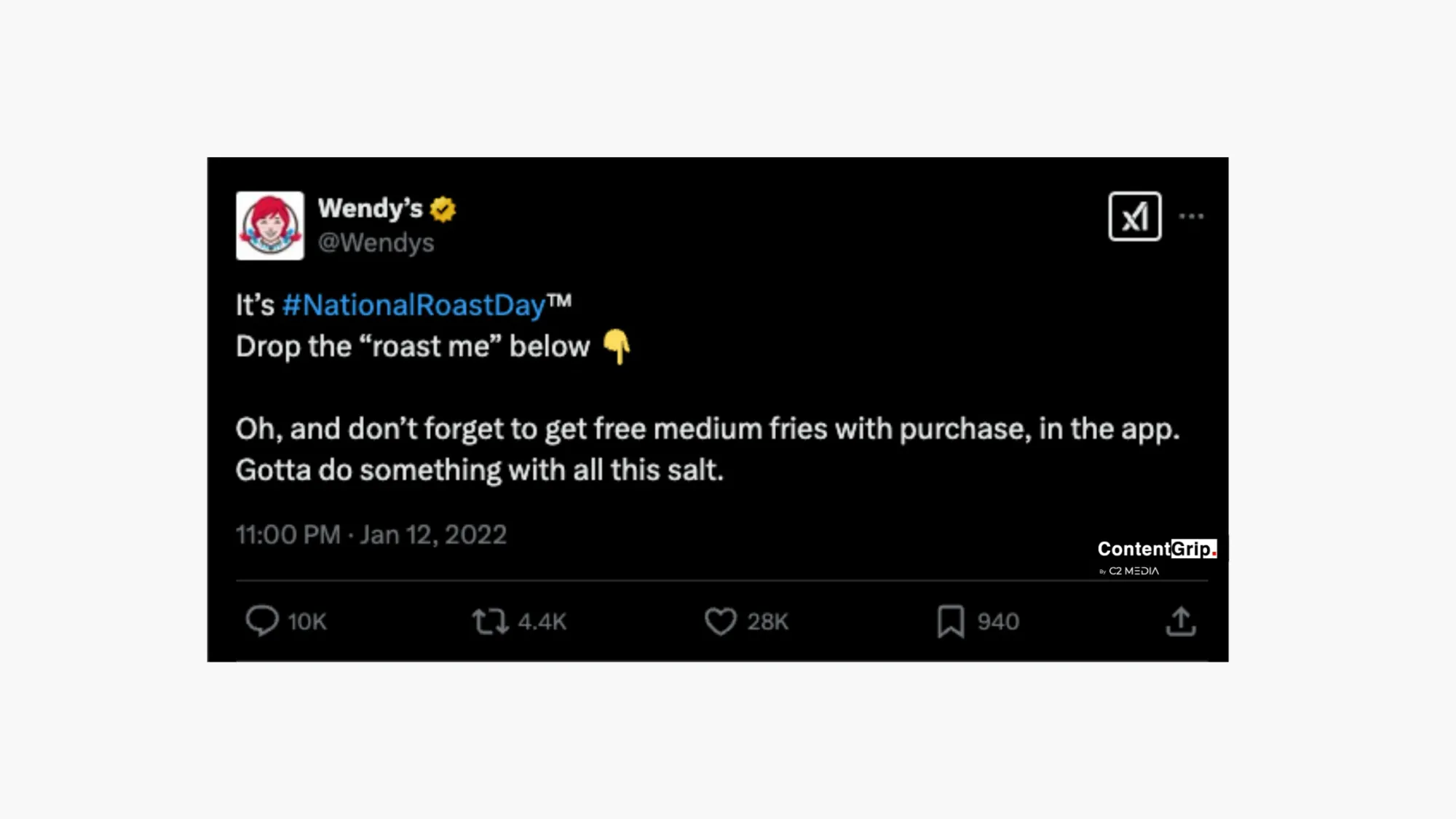What is crowd culture? How Wendy's roasts and Duolingo's owl changed marketing forever
When Wendy's started roasting competitors on social media, marketing changed forever. Discover how brands break rules in crowd culture.

When Ryanair started roasting passenger complaints with memes on TikTok, everyone thought their social media manager went rogue. Plot twist: it tripled their Gen Z bookings. That's not marketing from a textbook—that's understanding crowd culture.
Marketing has shifted. Traditional brand-driven narratives no longer hold the same power as they once did. Consumers today, especially Millennials and Gen Z, don’t just buy products—they buy into communities, shared values, and cultural movements.
This is where crowd culture comes in. Social media and digital platforms have made it easier for people to form strong communities based on shared beliefs, interests, and ideologies. These communities don’t just consume content—they shape public perception, influence trends, and dictate what brands should represent.
Brands that understand and engage with crowd culture build deeper loyalty and credibility. Those that ignore it risk losing relevance or even facing backlash for failing to meet consumer expectations.
If you want to future-proof your brand, you need to understand how crowd culture works and how to integrate it into your marketing strategy.
💡 Pressed for time? Here’s what matters:
- Crowd culture is when online communities shape brand perception and trends, not companies.
- Consumers buy into identities, not just products—brand values must align with their audience.
- Mass-market ads are losing impact; niche, community-driven engagement wins.
- B2B brands aren’t exempt—industry professionals form their own digital communities.
- Brands that engage authentically build loyalty; those that force trends risk backlash.
- Successful examples: Nike (social activism), Wendy’s (Twitter roasting), Duolingo (Gen Z humor).
- Marketing misfires: Burger King’s Women’s Day tweet.
- How to get it right: Monitor trends, engage authentically, co-create with communities, and stay agile.
What is the meaning of crowd culture?
It’s #NationalRoastDay™
— Wendy’s (@Wendys) January 12, 2022
Drop the “roast me” below 👇
Oh, and don’t forget to get free medium fries with purchase, in the app.
Gotta do something with all this salt.
Crowd culture refers to communities—both online and offline—that shape trends, brand perceptions, and consumer behaviors. Unlike traditional marketing, where brands control narratives, crowd culture is driven by shared beliefs, social media interactions, and grassroots digital movements.
From people’s pockets, no matter where they are in the world, smart devices allow them to share, send, and receive messages instantly. As a result, public sentiment about brands, products, or social causes spreads faster than ever—making crowd culture a critical force in marketing.
For example, Burger King's Women's Day Tweet was meant to spark a conversation about gender inequality in the culinary industry, but the initial phrasing—'Women belong in the kitchen'—was perceived as sexist before the brand clarified its intention. This highlights the risk of engaging with crowd culture without careful execution.
Sometimes people use the term “crowd culture” interchangeably with “subculture.” While they share similarities, they aren’t the same.
- Subcultures tend to be niche communities focused on specific hobbies, fandoms, or interests.
- Crowd culture, on the other hand, is more about collective attitudes and movements that influence mainstream conversations, consumer behavior, and brand loyalty.
Why is crowd culture important for marketing?
Ignoring crowd culture is no longer an option for brands. Consumers now expect companies to engage with their communities, reflect their values, and respond authentically to cultural shifts.
Here’s why crowd culture matters for marketing:
- Consumers buy identities, not just products. People want brands that align with their beliefs, interests, and communities.
- Mass-market advertising is losing relevance. Hyper-targeted, community-driven marketing is far more effective than one-size-fits-all messaging.
- Social proof is the new currency. Consumers trust recommendations from their communities more than traditional advertising.
Brands that understand crowd culture can create deeper customer connections, while those that ignore it risk losing relevance—or worse, facing backlash for being out of touch.
Example: Nike’s Colin Kaepernick ad campaign resonated because it authentically engaged with social activism—a dominant force in crowd culture. Despite controversy, it strengthened brand loyalty among its core audience.
Examples of crowd culture in branding
Successful brands don’t just market to consumers—they integrate into cultural movements.
1. Red Bull & extreme sports
Red Bull isn’t just a sponsor—it built credibility within extreme sports culture by creating events like Red Bull Rampage and sponsoring niche athletes.
2. Nike & social activism
Nike’s bold stance on social movements, such as the Colin Kaepernick campaign, tapped into a passionate consumer base and reinforced its brand identity.
3. Duolingo & gen Z humor
Duolingo has built a massive following on TikTok by using chaotic, meme-driven humor that aligns with how Gen Z interacts with brands. This wasn’t forced—it’s an authentic approach that resonates with younger audiences.
4. Wendy’s & X (Twitter) roasting culture
Instead of using a traditional corporate tone, Wendy’s embraced social media “roasting culture” to engage with customers in a more playful, irreverent way, making it one of the most followed and engaged fast-food brands online.
Takeaway: Brands that actively participate in crowd culture gain stronger loyalty and higher engagement. Those that remain passive risk fading into irrelevance.
Is crowd culture relevant to B2B?
Yes—B2B brands need to understand crowd culture. Decision-makers, engineers, and industry professionals form their own digital communities where they share insights and influence purchasing decisions.
B2B Crowd Culture Examples:
- Geothermal & Sustainability Networks: A geothermal company engaging in LinkedIn discussions about Net Zero goals can gain trust and authority.
- Fiber Optic Suppliers & ISP Engineers: Sharing technical insights in industry forums helps suppliers build credibility and influence purchasing decisions.
- Enterprise Connectivity & Tech Thought Leadership: Companies like Cisco thrive by participating in developer and IT conversations instead of just promoting products.
Takeaway: Even in highly technical industries, crowd culture drives B2B decisions—brands that engage in the right communities stand out.
How to implement crowd culture in your marketing strategy
Engaging with crowd culture isn’t about trend-jacking—it’s about understanding and participating in real conversations. Here’s how brands can do it:
1. Monitor online conversations
Use tools like Brandwatch, Sprout Social, or social media analytics to track cultural shifts, trending topics, and niche community discussions.
2. Engage authentically
Don’t just show up when it benefits you—be a real part of the community. Respond, interact, and add value instead of just selling.
3. Co-create with your audience
Encourage user-generated content (UGC), feedback, and brand participation. Consumers want to see themselves in your brand, not just hear from it.
4. Partner with micro-influencers
Niche voices hold more power than mainstream celebrities. Find influencers who are trusted within their communities for greater authenticity.
5. Be agile—culture moves fast
Trends evolve quickly. Brands that stay rigid miss opportunities, while those that adapt remain relevant.
Takeaway: The best crowd culture strategies don’t force brand messaging—they integrate naturally into community conversations.
FAQs
What is the meaning of crowd culture?
Crowd culture is the collective influence of digital communities on trends, branding, and purchasing decisions.
What is an example of crowd culture?
Nike’s social activism campaigns and Red Bull’s extreme sports branding are strong examples.
How does crowd culture influence branding?
Brands no longer control their narratives—consumers do. Companies must align with cultural movements or risk irrelevance.
How can B2B brands use crowd culture?
By engaging with industry-specific communities, sharing insights, and participating in expert discussions.
What are the risks of engaging with crowd culture?
Brands that engage superficially or opportunistically can face backlash for being inauthentic or out of touch.




